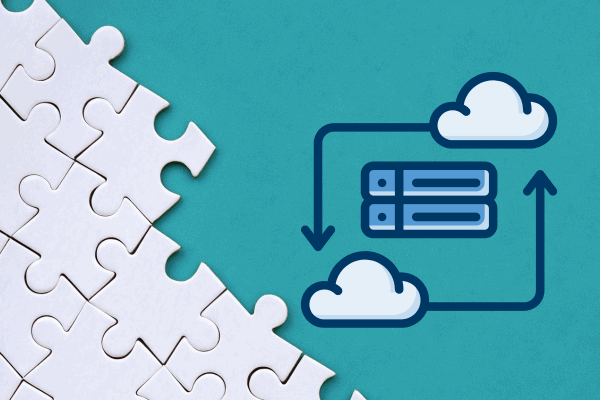
Losing access to your critical business data or systems due to an incident can mean productivity loss, reputational damage, and in some cases a full shutdown of your operations. Delays in recovery aren’t just inconvenient, they’re potentially a breach of policy, contract, compliance or client agreements. Having a robust backup solution can help you avoid this – but choosing the right one can be challenging. In this blog, we’ll talk about recovery time objective (RTO) and recovery point objective (RPO); and the importance of properly managed backups.
What does a backup solution do?
There are many different backup solutions and services, but the primary goal is the same. Backup solutions copy your data and keep that copy safely somewhere else. If there’s an issue, you, or your IT partner, can then restore the data from the copy.
Depending on the capabilities of your backup solution, restoring the data can take anywhere from an hour to a few days. You also need to consider how much data you’re willing to lose, for instance if backups are taken every four hours and you have an issue 3 hours after the last backup is taken, you’ll lose three hours of data. Whereas if your backups were every hour, you’d lose much less.
The benefits of fully managed backups
There are significant benefits to managed backups, which an IT partner manages, monitors and maintains. Managed backups are scheduled to run at regular intervals. They include test restores, expert management and oversight, technical support, monitoring, and more. For most organizations, a managed backup solution is the easiest way to stay recovery-ready.
Risks of unmanaged backups
Then there’s the unmanaged group, which just includes the ability to take backups and restore from them. The solution itself is in place, but it’s up to you to test, monitor, and maintain it. With an unmanaged backup, if you’re not watching and maintaining it regularly, you’re not going to have a reliable solution if disaster strikes.
RTO and RPO in backups
RTO and RPO aren’t just about operational uptime. they’re integral to cybersecurity strategy. In regulated environments, these metrics often tie into mandated recovery windows and audit requirements. Misalignment can expose organizations to noncompliance, penalties, or vulnerabilities.
What is RTO?
RTO stands for recovery time objective. In simpler terms, a recovery time objective is how long you’ll have to wait until your data is restored. This estimate is often only hours, but in some cases and with more budget conscious solutions, it can be days.
It’s important to have a recovery plan in place and conduct regular testing to ensure that you’re confident in your RTO. This also helps get everyone on the same page for what recovery will entail.
What is RPO?
RPO is the recovery point objective. This indicates the point you’re able to restore from. For instance, you could have a RPO of 4 hours. This means backups would be captured every 4 hours, meaning you could potentially lose up to 4 hours of data. Having a shorter RPO helps ensure you have the most minimal data loss.
Which is more important, RTO or RPO?
That depends on your business. Ideally, the answer is both – your backup solution should provide a fast RTO, and a short RPO. A comprehensive managed backup solution can help you achieve both. But if that’s not feasible, you may need to prioritize based on the impact to your business.
So, ask yourself these two questions:
- How much does an hour of downtime cost you?
- How much data can you stand to lose?
- What is the cost of redoing an hour’s worth of work?
Whichever makes more of an impact on your bottom line, that’s probably your answer.
When organizations set RTO and RPO targets, it’s a risk-based decision. What you choose to prioritize also needs to align with your broader cybersecurity policy and compliance frameworks. For example, HIPAA and NYDFS have minimum recovery expectations, and cyber insurance providers may require proof of recovery capabilities. An RTO target that meets operational needs can still violate a client contract or regulatory obligation, resulting in penalties or litigation.
Real cybersecurity scenarios where RTO and RPO have an impact:
Here are a few examples showing how RTO and RPO directly correlate to cybersecurity event incident response.
- In a ransomware attack, long RTOs may give attackers more leverage—faster recoveries reduce that risk.
- In a data breach, the RPO defines how far back you can roll to contain damage. A 24-hour RPO could mean keeping 24 hours of compromised data.
ADNET’s recommendation
As with everything in IT, there’s no one-size-fits-all answer. The type of backup solution you prioritize will depend on your business. But a good IT partner will offer a range of solutions in different price points that allow for everything from DIY to fully managed backups and will help you choose the one that’s best for your business.
If you haven’t reviewed these with your IT or cybersecurity team lately, it’s time to start that conversation. It’s not just about backups—it’s about resilience, client confidence, and risk. Not sure where to start? Let’s talk. We would be happy to help your organization align recovery planning with the realities of your industry, compliance needs, and budget.